Irresistible Gorski Kotar: Tourist Board Presents Largest Virtual Walk in Croatia
August 30, 2021 - You can now explore the irresistible Gorski Kotar landscapes with the largest virtual walk in Croatia!
The Gorski Kotar Tourist Board has created the largest virtual walk in Croatia - 360° Gorski Kotar / Spring-Summer, reports HRTurizam.
Thus, you can be virtually acquainted with a total of 168 panoramas in Gorski Kotar, 28 from the air and 140 from the ground. Panoramas by Rajko Mrvoš from ZooM video & photography are divided into: Gorski Kotar from the air, NP Risnjak, Brod Moravice, Čabar, Delnice, Fužine, Lokve, Mrkopalj, Ravna Gora and Vrbovsko.
Virtually explore Gorski Kotar HERE
According to data from eVisitor, Gorski Kotar realized 94.67% of tourist overnight stays and 95% of arrivals from the record 2019 by August 15.
In the first half of August this year, there were 10% more overnight stays compared to 2019. The greatest interest was expressed in accommodation in higher categories, and accommodation in households has 28% more overnight stays than in 2019.
“We are counting more than 30% of overnight stays of our domestic guests this year compared to 2019, and the number of reservations for the winter period is noticeable, especially private accommodation of a higher category. In addition, accommodation is already being reserved for the New Year and school holidays," said Petar Hrg, the Gorski Kotar Tourist Board director.
Last week, the Gorski Kotar Tourist Board stated on Index.hr that certain accommodation facilities of higher categories, especially holiday homes, are booked for 150 to 240 days a year.
"Gorski Kotar is the green lungs of Croatia, and we are strategically focused on preserving our natural values, which we defined in the Master Plan for Tourism Development. We want to enrich the experience of our visitors throughout the year by planning investments in tourist facilities. This will be reflected in the demographic picture and the turn towards tourism as one of the stronger levers of development in this area," they said.
Gorski Kotar's local self-government units want to enrich the sports-recreational and winter tourist offer with already prepared projects.
The Gorski Kotar Tourist Board president and mayor of Fužine, David Bregovac, said that more and more guests want to spend their summer vacation in mountainous areas and that Gorski Kotar has an advantage - the proximity to the sea.
"Our goal is to use the potential of the year-round destination, and I hope that the County and the state will join us with significant investments," said Bregovac, adding that Gorski Kotar is a safe region in which the epidemiological situation is systematically monitored.
They also stated that the average rating of Gorski Kotar accommodation capacities on Booking.com is 9.3 out of 10, on Google 4.7 out of 5, on TripAdvisor 4.6 out of 5, and Airbnb 4.9 out of 5. At the same time, about twenty Gorski Kotar restaurants are rated on Google with 4.4 and TripAdvisor with 4.
For more, make sure to check out our dedicated travel section.
Gorski Kotar's Eco-system, Tourism Suffer Due to Climate Change
ZAGREB, 20 June, 2021 - Climate change has left a huge mark on the forests of the Gorski Kotar mountain region in central Croatia, causing its tourism value to drop, experts say.
Over the past decade, ice, wind and the bark beetle have destroyed large parts of Gorski Kotar, whose economy, including tourism, is based on natural resources.
Dragan Turk, a manager at Risnjak National Park, says that due to natural disasters the national park will lose its value as a protected area. "If climate change is too fast, it will take more than 100 years for forests to regenerate."
Last week, an international team of experts presented the findings of a study on the effects of climate change in Gorski Kotar, warning that it could affect local tourism.
The study was conducted by the Zagreb Faculty of Economics and Business in cooperation with Leeds Beckett University and Bocconi University in Milan. The Croatian Meteorological and Hydrological Service cooperated on the project.
In four years, ice, wind and the bark beetle have destroyed more than a million square metres of wood, which has greatly affected the eco-system, experts says.
Beekeeper Damir Zanoškar says the various corridors resulting from deforestation are probably the cause of the increasingly strong winds registered in recent years.
He says the Hrvatske Šume national forest management company should ask itself what the current model forest management is leading to. "Thousands and thousands of logs are being driven somewhere far."
Beekeepers have joined forces and launched a fir-planting drive because fir is well-adapted to Gorski Kotar and is very useful to bees. Zanoškar says big fir-planting campaigns could give Gorski Kotar its former aspect back in 20-30 years.
"Time is running out," he warns. "We need forests and we must take immediate action."
Experts say that although extreme weather occurred in the past as well, today it causes bigger problems and is not related to only one season. That's why climate projections should be taken into account when planning new projects and infrastructure, they add.
Climate change could affect the tourism industry, notably in southern Europe, experts say.
Warmer and drier summers can result in bigger droughts, wildfires and negative changes in plants and animals, which would make summer vacations in Mediterranean countries uncomfortable. At the same time, northern countries with more moderate summers could see a rise in tourist turnover, experts say.
If it adapts, tourism can expect positive results, otherwise the negative effects are inevitable, they add.
For more on lifestyle in Croatia, follow TCN's dedicated page.
For more about Croatia, CLICK HERE.
New Ogulin Glamping Resort By the Lake!
May 31st, 2021 - The new Ogulin glamping resort is the latest attraction with its unique ‘A-Frame cottages’ by the lake.
Jutarnji reports, there are 20 glamping houses with saunas, swimming pools, jacuzzis, and pitches for private tents, and the emphasis is on the sensory park, which aims to arouse the senses.
Glamping is, by the simplest definition, a mixture of glamor and camping. It is, in fact, the fusion of these two concepts, which transform camping into premium luxury accommodation in nature, and in our areas, it is nothing new. The future Ogulin glamping resort will definitely raise the offer, quality, and glamorous camping experience in Croatia.
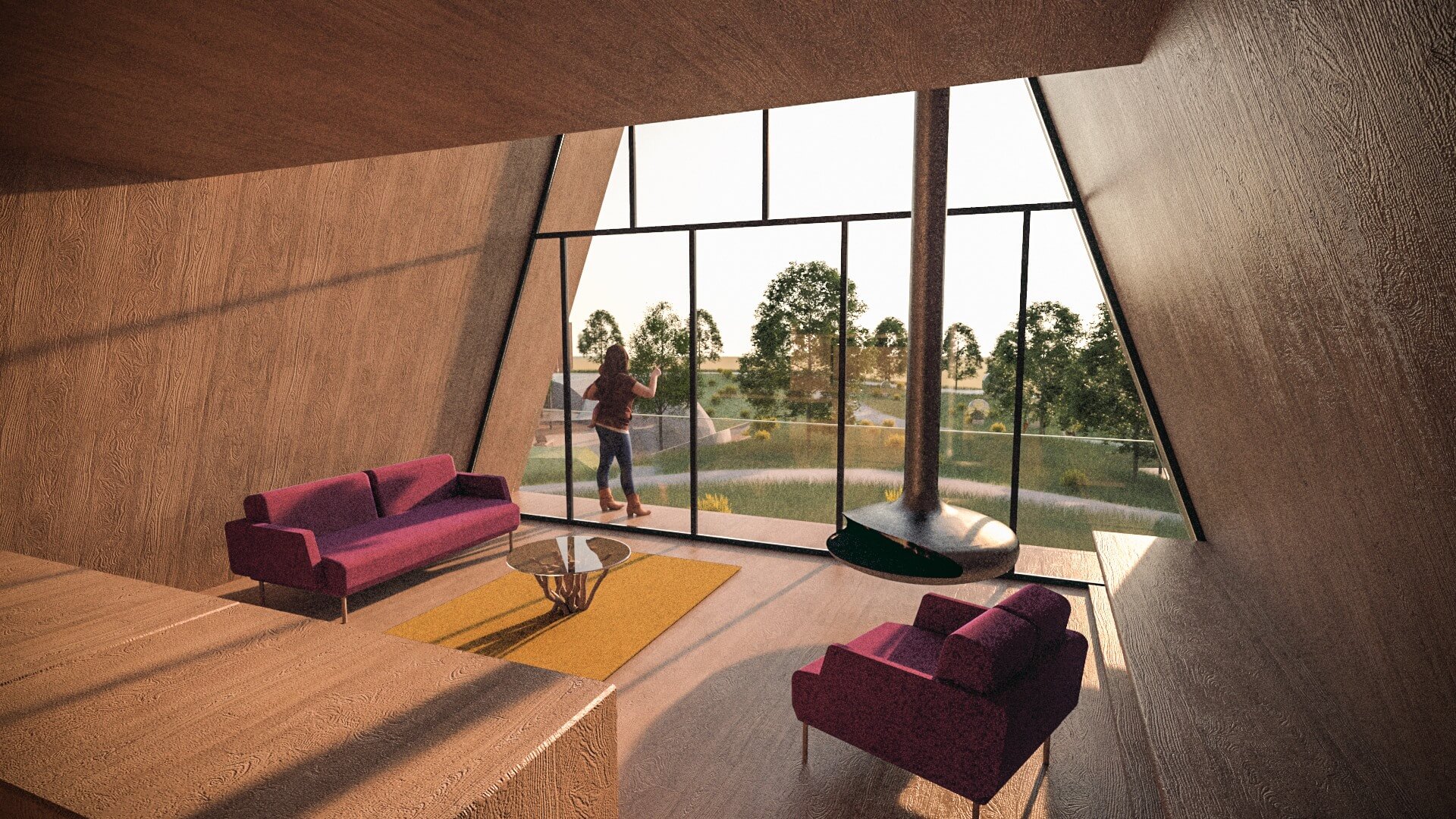
H3 Studio d.o.o | H3 Studio d.o.o Facebook
The new glamping resort will be located near Lake Sabljaci, in the settlement of Otok Oštarijski, part of the town of Ogulin. The project is currently under construction. According to the conceptual architectural and urban study prepared by H3 Studio, it includes a land area of 45,821 square meters, which is located within catering and tourism. There is a central building with reception, kitchen, restaurant and cafe, terrace, offices, toilets and storage, 20 double and quadruple glamping mobile home, pitches for private tents and numerous public facilities, or sports and recreational areas and playgrounds.
Architect Hrvoje Hanže Hanzlin from H3 Studio explains that in agreement with the investor, the idea of a glamping resort was reached, and the focus is to create an anti-stress program.
"Given that a forest surrounds the plot, there is a lake, and in the background of the mountains Klek, we did not focus on maximum construction, but we devised a concept that will provide a connection with nature and beautiful views, while high-quality accommodation and content that would provide users with relaxation, peace, and privacy," says Hrvoje Hanže Hanlin and adds that the emphasis is therefore placed on the sensory park, which aims to stimulate the senses, reduce the stress of everyday hectic life and help find balance.
The resort itself is divided into several zones, depending on the configuration of the slope. At the top, there are glamping houses, and at the bottom, there are public facilities. In addition to the sensory park, tennis and mini-golf courts, a children's playground, a dog playground, and a flower garden are planned. The spirit of the climate is also visible in the design of buildings, with the use of local materials, mostly wood.
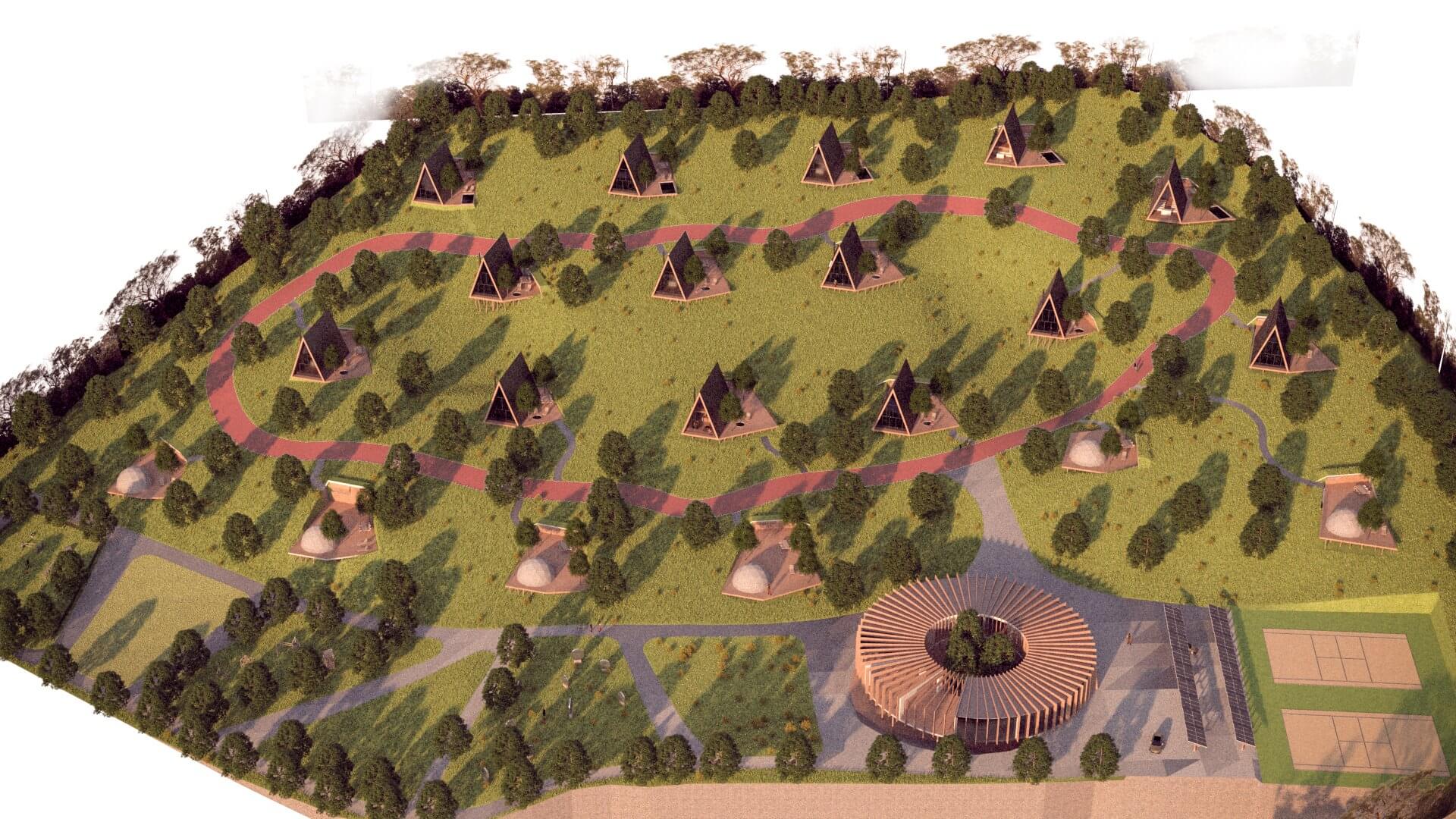
H3 Studio d.o.o | H3 Studio d.o.o Facebook
"The shape of the glamping mobile home is a modern interpretation of the archetypal shape of the houses of Gorski Kotar 'A-Frame house'," explains the architect. He adds that such houses were once built with a stone base, but here it is physically dislocated and "pushed" into the terrain on a slope and is used as an auxiliary room equipped with a barbecue and storage. The houses themselves are raised from the ground and placed on wooden poles while in the space between the plateau with a pool or jacuzzi.
Also, all homes are equipped with saunas. On one side, there is a sail on the front, on the other a glass rock, and thanks to the configuration of the terrain on the slope, all the houses have a view of Lake Sabljaci.
The start of the project has not been defined yet, given that the necessary permits are still pending.
Follow the latest on flights to Croatia HERE and the latest travel updates and COVID-19 news from Croatia HERE.
For more on travel in Croatia, follow TCN's dedicated page.
Gorski Kotar Treehouse, A Dream Vacation!
May 13th, 2021 - Located in Tršće, the Gorski Kotar treehouse is a dream vacation.
As Fashion.hr reports, Croatia is known to have some of the most beautiful and unique accommodations, yet somehow, we still manage to be positively surprised once in a while. A stay in the dreamy treehouse will be a vacation that will be long remembered.
Over the past few seasons, treehouses have become one of the most sought-after forms of accommodation, which does not surprise me because it is a completely different and special experience. The name of the treehouse is Gorski Lazi, located in Tršće, and it was created with Robinson Crusoe in mind to portray glamping in Croatia. The treehouse can accommodate four people at a time.
Although it is a holiday where the idea is to distance yourself from the hectic modern world, Gorski Lazi offers an internet connection and all additional accompanying content such as barbecue, audio system, solar heating, etc., you can be sure that nothing will miss. Providing you with a proper glamping experience! The treehouse is very eco-friendly, with a compost toilet, solar electricity, and even a beautiful stream near the cottage to cool your drinks. The treehouse's setup is rather interesting. The kitchen is located in an outdoor area below the treehouse, and the garden is filled with beautiful deck chairs and chairs where you can enjoy an unreal view of untouched nature, a beautiful view of the mountain.
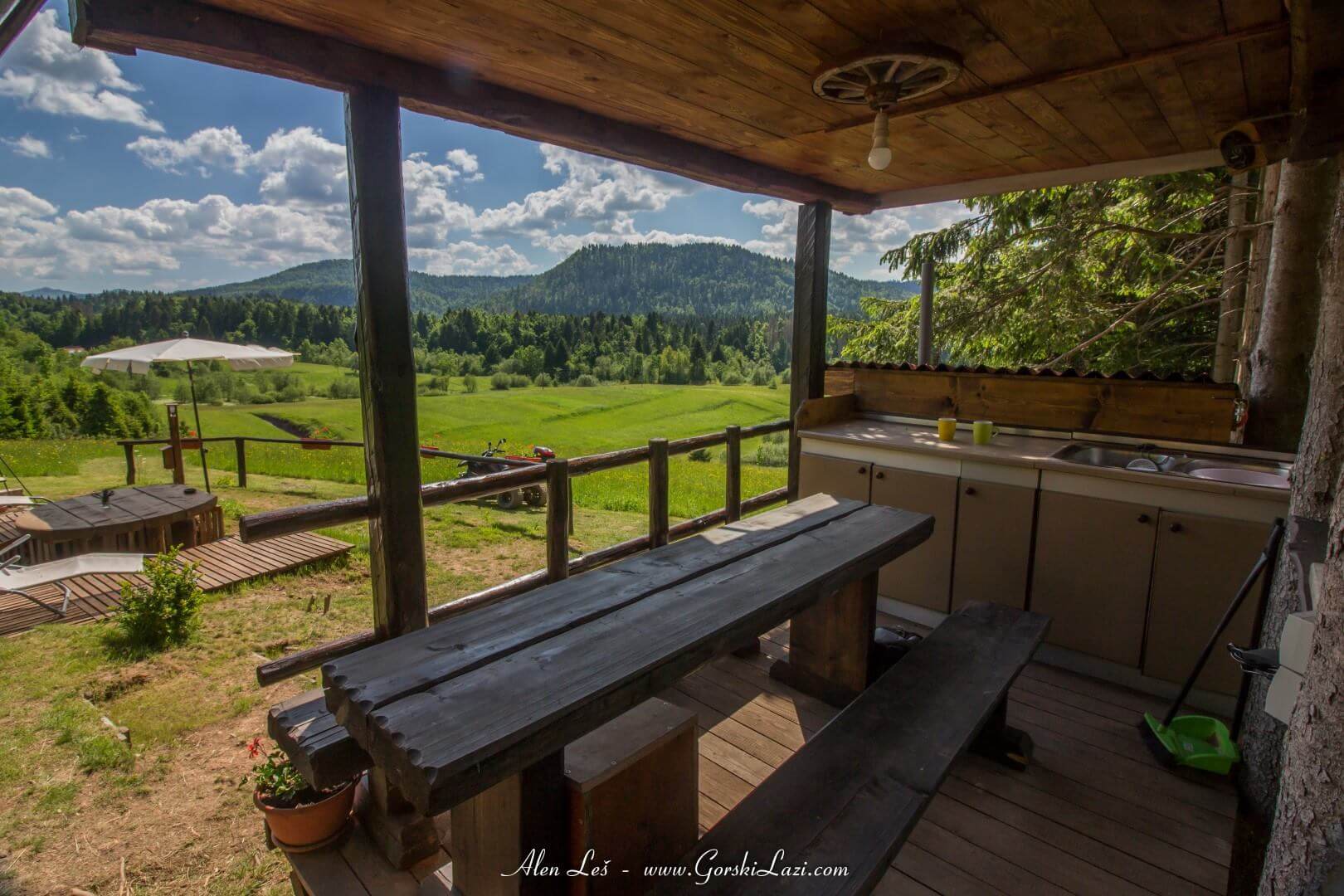
The magical location of the Gorski Lazi treehouse cannot directly be reached by car, but there is a designated parking place where you leave your car and all your worries behind. The hosts will transport you to your magical getaway to fully enjoy nature. If you are more of an active person, not to worry, there are various excursions and places to be explored nearby, such as the adrenaline park! The hosts have prepared a tourist map with all the information necessary.
For more on travel in Croatia, follow TCN's dedicated page.
Interest in Houses in Zagreb Down 10%, Says Online Classified Site
ZAGREB, 5 March, 2021 - Over the past 12 months interest in buying a house in Zagreb dropped by 10% while at the same time interest in house purchase in Gorski Kotar, Lika and Istria grew significantly, shows an analysis by the Njuškalo online classified site.
Even though there have been no major changes in asking prices for real estate in Zagreb over the past 12 months, trends related to demand point to changes in customers' interest, which is probably due to a series of earthquakes that hit central Croatia in 2020.
Whereas last year clients increasingly searched for houses in Zagreb, rather than flats, over the past 12 months the interest in buying a house in Zagreb dropped by 10%.
In the entire country the interest in house and flat purchases grew less than one percent on the year but some regions have become much more attractive.
In the central mountainous Primorje-Gorski Kotar County, the interest in buying a house rose by 26.75% in the last 12 months, while in Istria it went up by 25%. Ads for properties in Lika-Senj County, too, saw an increase in views of 22.4%.
The average asking price for houses in Primorje-Gorski Kotar County was €1,595 per square metre, in Istria County it was €1,799 and in Lika-Senj County €1,160.
Potential buyers also increasingly searched for houses in Zadar County, as well as in the region of Međimurje, with interest in buying real estate there going up by 11%.
Interest in flats in Zagreb up 5.6%
From February 2020 to February 2021 interest in buying a flat in Zagreb grew by 5.6%, with the average asking price exceeding €2,150 in February 2021.
Among the cities where asking prices have continued growing are Osijek, Zadar and Pula, with Rijeka seeing the highest increase, of 6.4%, for the second consecutive month. Even though Split was previously in this group, it has been stagnating now in terms of the average asking price, Njuškalo says.
Rent in Zagreb down 9%, demand down 6%
Over the past 12 months, the rent on flats in Zagreb dropped by 9% and demand in the first two months of this year dropped 6% compared to the same period of 2020.
The average rent in Zagreb was €539, with most flats for rent having an area of 40-70 square metres, and the only flats to see an increase in the cost of rent on the year were those with an area of 20 square metres. The cost of rent for such flats went up by 3.2% to an average €231 per month.
The cost of rent dropped the most in the downtown area of Zagreb, by 11%, however, the average cost of rent still exceeds €700 a month, the online site says.
HRK 8 Million for Nine Towns and Municipalities in Gorski Kotar
ZAGREB, 19 February, 2021 - Regional Development and EU Funds Minister Nataša Tramišak on Friday presented representatives of nine municipalities and towns in Gorski Kotar with contracts worth over HRK 8 million, based on which each local unit will receive nearly a million kuna of non-repayable funds.
The cities of Čabar, Delnice and Vrbovsko and the municipalities of Mrkopalj, Fužine, Skrad, Brod Moravice, Ravna Gora and Lokve received funds for projects such as the construction and extension of a kindergarten, a recreation centre, the reconstruction of unclassified roads and public lighting.
Minister Tramišak said that HRK 8 million had been provided from the state budget for projects that ensure better living conditions.
"For the first time this year 30% of the funding from the programme for the sustainable development of mountainous regions is earmarked especially for the Gorski Kotar area," she said, announcing a programme for the development of mountainous regions for this year, which will define new measures and activities for businesspeople and entrepreneurs, that is, for investments in those areas, especially Gorski Kotar.
That will, in addition to the European funding in the new programming period, certainly help the development of the economy, entrepreneurship and thus demographic revitalisation, she said.
"The government has by this year invested over HRK 36 million in Gorski Kotar, and there is a total of HRK 190 million worth of European projects, especially for water infrastructure", Minister Tramišak said.
Maritime Affairs, Transport and Infrastructure Minister Oleg Butković said that the fact that cities and municipalities had submitted their applications indicated that they knew how to prepare and manage projects and that the ministry and the government were willing to continue assisting them.
Answering reporters' questions, he recalled that four years ago assistance had been provided for the maintenance of local roads in Gorski Kotar, that is, for the winter service through the Hrvatske Ceste road company, which was still being done.
"This government has done a lot to financially stabilise all local units," Butković said, noting that it is good that in addition to big, strategic infrastructure projects, there are also smaller projects, important to local units.
"The duty of all of us in the government is to help smaller local units, especially in Gorski Kotar, Lika... Dalmatinska Zagora, Slavonia, particularly quake-hit areas, to realise and finance their projects," Minister Butković said.
(€1 = HRK 7.56)
Falling Snow Causes Treacherous Conditions on Croatian Roads
January 25, 2021 – Released images show falling snow is causing extremely difficult conditions on some Croatian roads, both motorways and state roads, with the mountainous regions of Lika and Gorski Kotar most affected
Any optimists living in Zagreb could be forgiven for thinking winter was over. Over a succession of two days last week they were basking in the relatively balmy daytime temperatures of 16 degrees. The sun shone brightly, the boots stayed indoors and lighter jackets were thrown on to visit the shops. Not everyone in Zagreb is an optimist, though. And those with an experience that is greater than their hope knew the reality of the situation; Croatia's winter can turn round at any moment to bite you in the ass.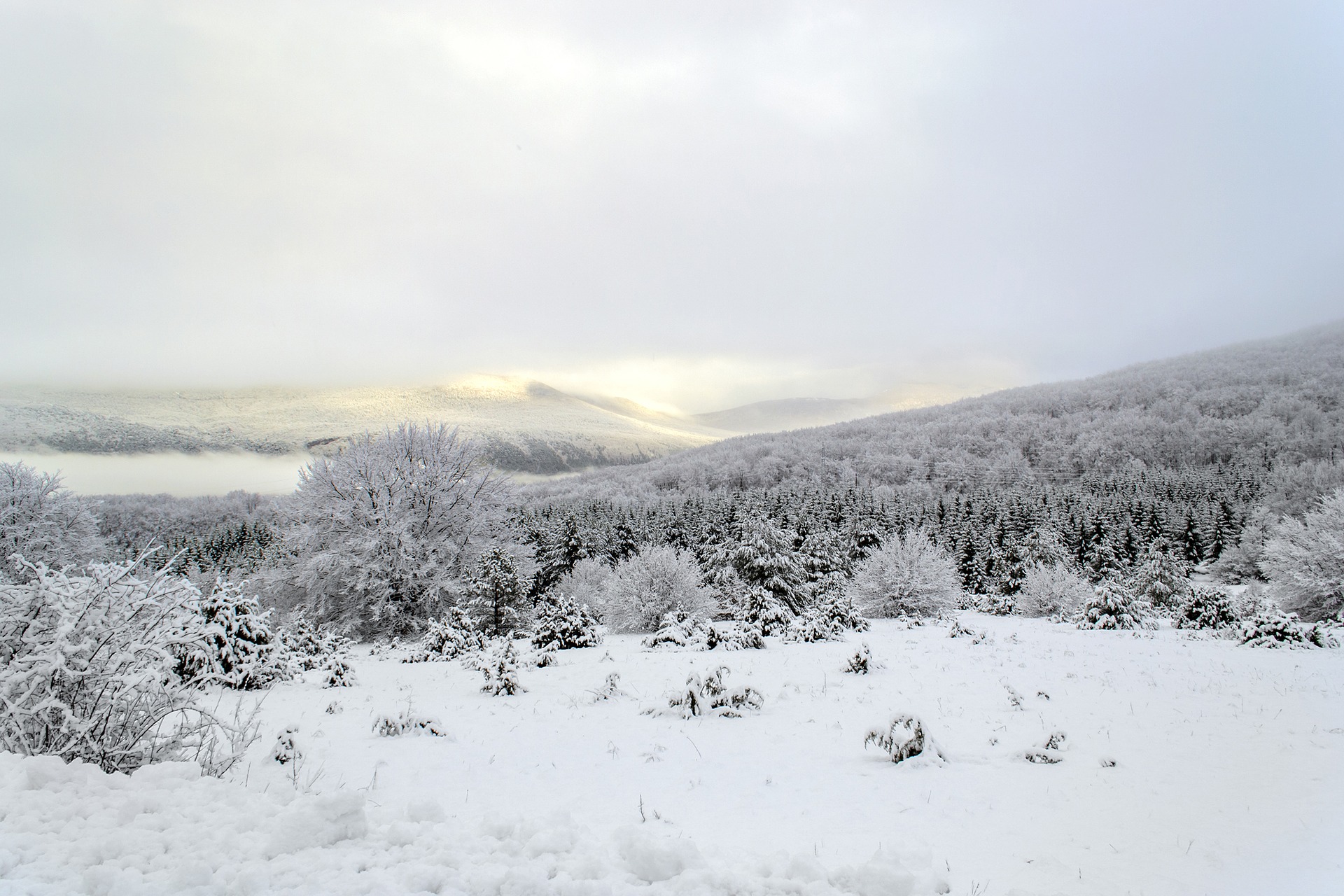 Snow covering the Lika region
Snow covering the Lika region
And that's exactly what happened this weekend, when falling snow produced treacherous driving conditions across a wide area of Croatia. On some motorways, a ban on trucks with trailers and tractors with semi-trailers is in place because of the continually falling snow. Another response to the falling snow has been to make winter vehicle equipment mandatory.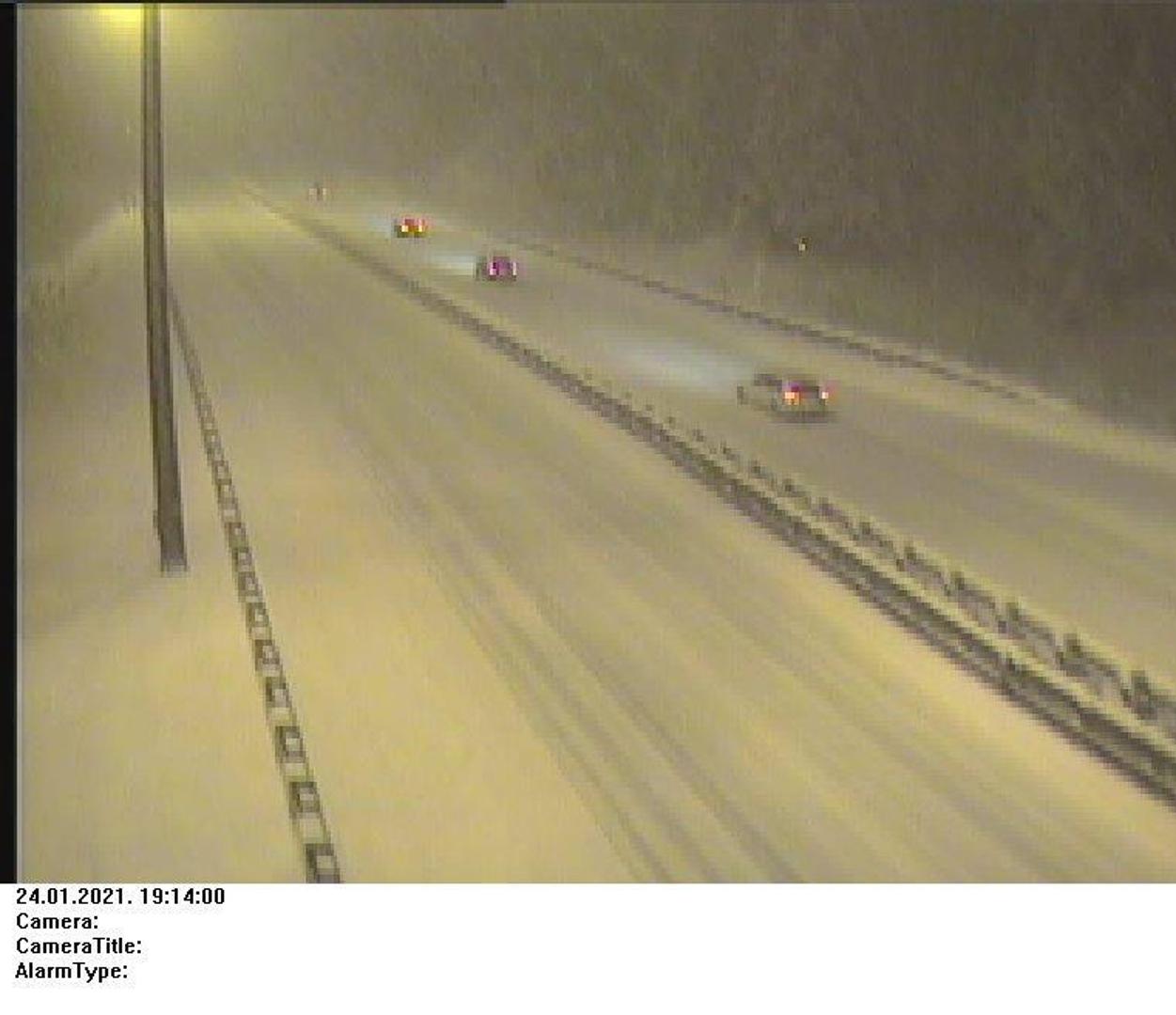 A thick layer of snow covers the road near Delnice at 19.14 on Sunday 24 January 2021 © HAK
A thick layer of snow covers the road near Delnice at 19.14 on Sunday 24 January 2021 © HAK
While the Croatian capital was experiencing its warm spell, falling snow continued to descend on more mountainous regions of the country, Lika and Gorski Kotar in particular. And it is those that remain most affected by the treacherous driving conditions. Hrvatske Autoceste (Croatian Motorways) are responding to the continuing weather conditions. But, they released pictures of one motorway section near Delnice which, even after plowing, was 30 minutes later again covered by the falling snow.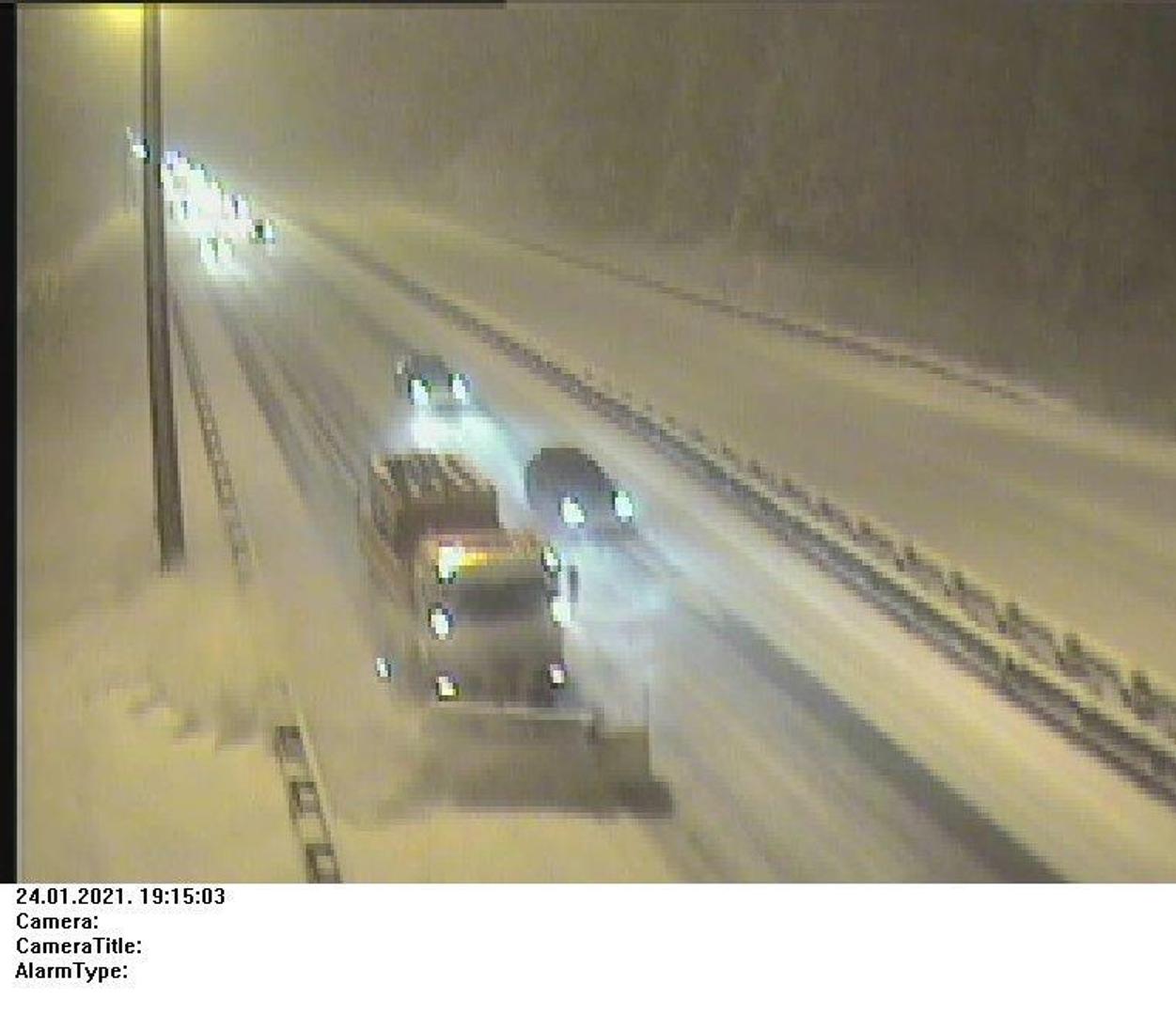 A snowplow arrives at 19.15 to clear the snow © HAK
A snowplow arrives at 19.15 to clear the snow © HAK
Thick falling snow and ice made it difficult to drive on the A6 Zagreb - Rijeka highway. The National Association of Drivers and Vehicle Owners (HAK) issued a series of warnings for the following routes: A1 Zagreb-Split-Ploče between the junctions of Bosiljevo II and Maslenica, A6 Rijeka-Zagreb between the junctions of Bosiljevo II and Kikovica, state road DC1 between Zagorje and Gračac and state road DC3 through Gorski Kotar between Zdihovo and Kikovica.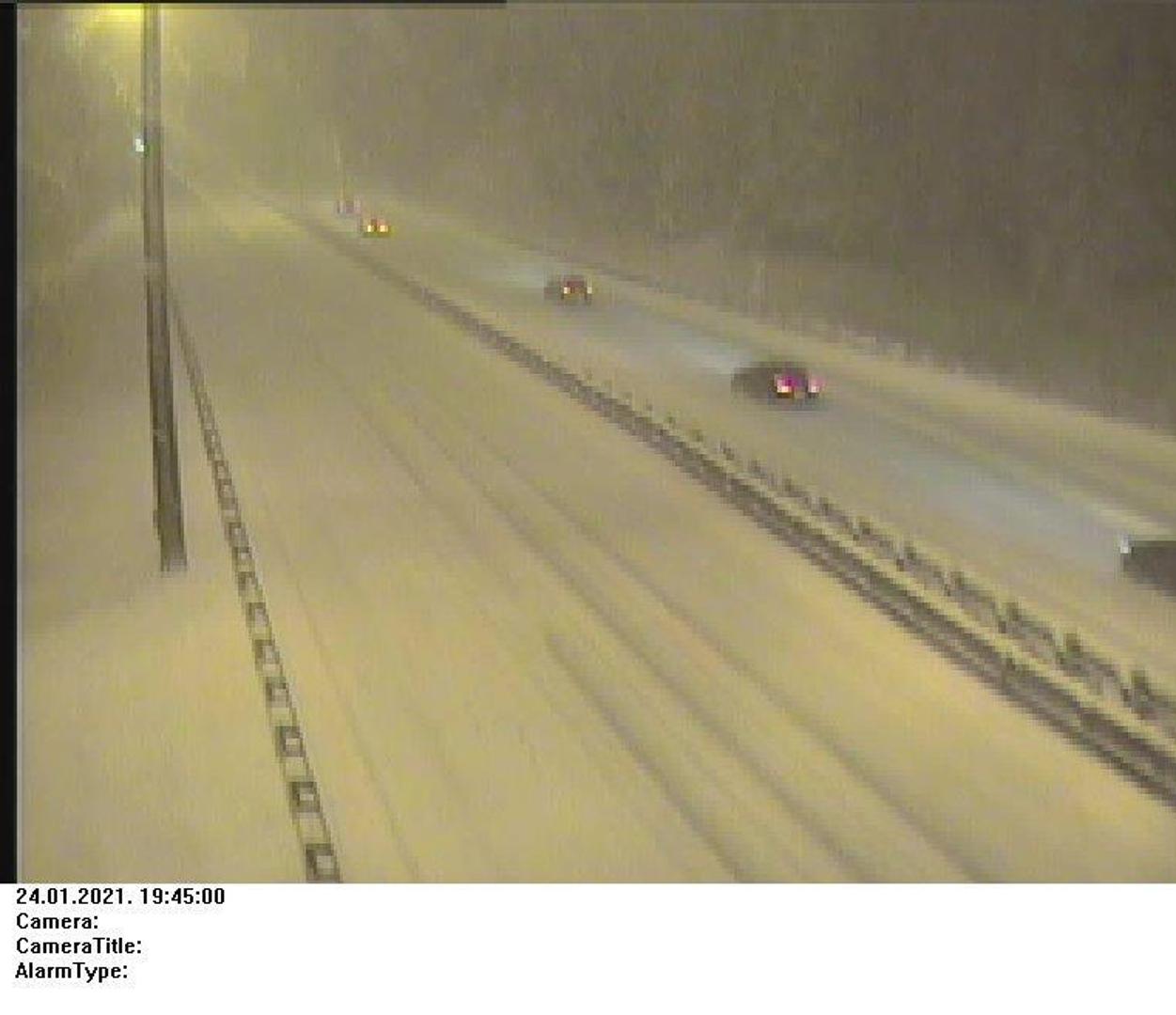 By 19.45 the road is in the same state as before the snowplow arrived, because of continually falling snow © HAK
By 19.45 the road is in the same state as before the snowplow arrived, because of continually falling snow © HAK
HAK also reported that there is currently no passable road for trucks with trailers and tractors with semi-trailers from the direction of the continental interior towards Rijeka and Istria and Dalmatia and vice versa. The colder temperatures are expected to stick around for most of the early part of the week, although the skies may be clearer in some regions. Temperatures will rise again heading towards next weekend under an increasing cloud cover, but the chilly conditions might well bounce back towards the end of next weekend. Zagreb itself could even experience more snowfall at that time.
Nine Towns, Municipalities Form Gorski Kotar Regional Tourism Board
ZAGREB, November 25, 2020 - Nine towns and municipalities in the central mountainous Gorski Kotar region on Wednesday signed an agreement on joining their local tourism boards into a single regional tourism board and presented a new master plan for the development of the region's tourism sector.
The new regional tourism board covers the towns of Vrbovsko, Cabar and Delnice and the municipalities of Fuzine, Mrkopalj, Brod Moravice, Skrad and Ravna Gora.
The regional tourism board will be based in Delnice and the towns and municipalities will establish their own tourism offices or information centres depending on their needs and possibilities.
The signing of the agreement was also attended by Tourism and Sports Minister Nikolina Brnjac, who said that Gorski Kotar was a destination whose potential had been growing on an annual basis.
She said that so far, not including Gorski Kotar, 18 tourism boards covering the area of some 90 local government units had already joined while six had joint projects. The purpose of their association is cost-cutting, better quality and joint presentation and destination development, Brnjac said.
The master plan for the development of tourism in Gorski Kotar has three key goals - increasing the visibility of destination development, greater tourist turnover and greater investments. The key products are active vacationing, excursions and gastronomy.
Presenting the master plan, Sinisa Topalovic of the Horwath HTL company, said that only 3% of regional revenue came from tourism, and most tourist accommodation capacity was privately owned. More than half of the accommodation units are one, two or three-star units and there aren't any in the five-star category for accommodation units, he said.
The growth i ncommercial accommodation is evident, as is an even greater increase in noncommercial accommodation, that is, holiday houses.
More than 50% of the local tourism boards' revenue were funds from local government units, while administrative costs accounted for more than 40% of their expenditure.
According to data from the Kvarner Tourism Board, this year there have been around 79,000 overnight stays in Gorski Kotar, as against around 110,000 last year. Gorski Kotar accounts for around 0.5% of the tourism turnover of Primorje-Gorski Kotar County.
One of the Most Beautiful Houses in Gorski Kotar On Sale for €1m
October 19, 2020 - One of the most beautiful houses in Gorski Kotar, and Croatia, was recently put up for sale for almost $ 1.2 million. In the meantime, the New York Times also reported on this sensational house in Hlevci.
As Telegram writes, the house is advertised under the name Villa Foresta on the famous luxury real estate sales page Sotheby’s, where it is offered for 1,170,102 dollars, or 7 and a half million kunas.
Villa Foresta spreads over three floors, has three bedrooms, an outdoor pool, a wine cellar, and a sauna. The complete area of the house is 200 square meters, and the whole side is a huge glass wall. The rest of the house is made of wood. This holiday home was fully completed in 2019.
The New York Times mentions the fact that materials from Croatia were used for the construction as one of the special features of the house. They write that the primary materials are Siberian larch and iron from local sources.
Namely, the owner of the house wanted it to be made of sustainable materials from local suppliers. Thus, the furniture and shelves were made by local craftsmen from solid wood.
Although the owner told the New York Times about the house, he wished to remain anonymous.
"My guiding idea was longevity and resistance to the extreme weather conditions because it’s Gorski Kotar after all. But I wanted it to be as natural as possible, with as few chemicals as possible, so that it blends into the pristine nature of the area," said the owner for NYT.
The house is decorated in a minimalist Scandinavian style. You can enter through a garage that leads to a social space, sauna, bathroom, and wine cellar, which is decorated in the style of Croatian taverns.
"The second floor, which cantilevers slightly over the deck, has three bedrooms with en suite bathrooms, the largest of which looks out to the forest through a wall of windows. A fire pit, barbecue, open dining area, and garden are in the backyard," reads the description of the house.
While the New York Times article lists nearby tourist attractions (Plitvice Lakes, Risnjak, Rijeka…), it also mentions that Croatia responded to the coronavirus in March with restrictive measures, which they say brought the epidemic under control. But they did not fail to write that the tourist season has started a new wave of infection.
The Sotheby’s agent in charge of this house, Mirjana Mičetić, who says the house is "truly a Croatian product", notes that the market is stable.
"The market never actually died. My feeling is that it was pushed back by two to three months," Mičetić said, adding that during the lockdown she had virtual tours of the house, and potential buyers planning to come in the spring postponed the visit to June, July, and August.
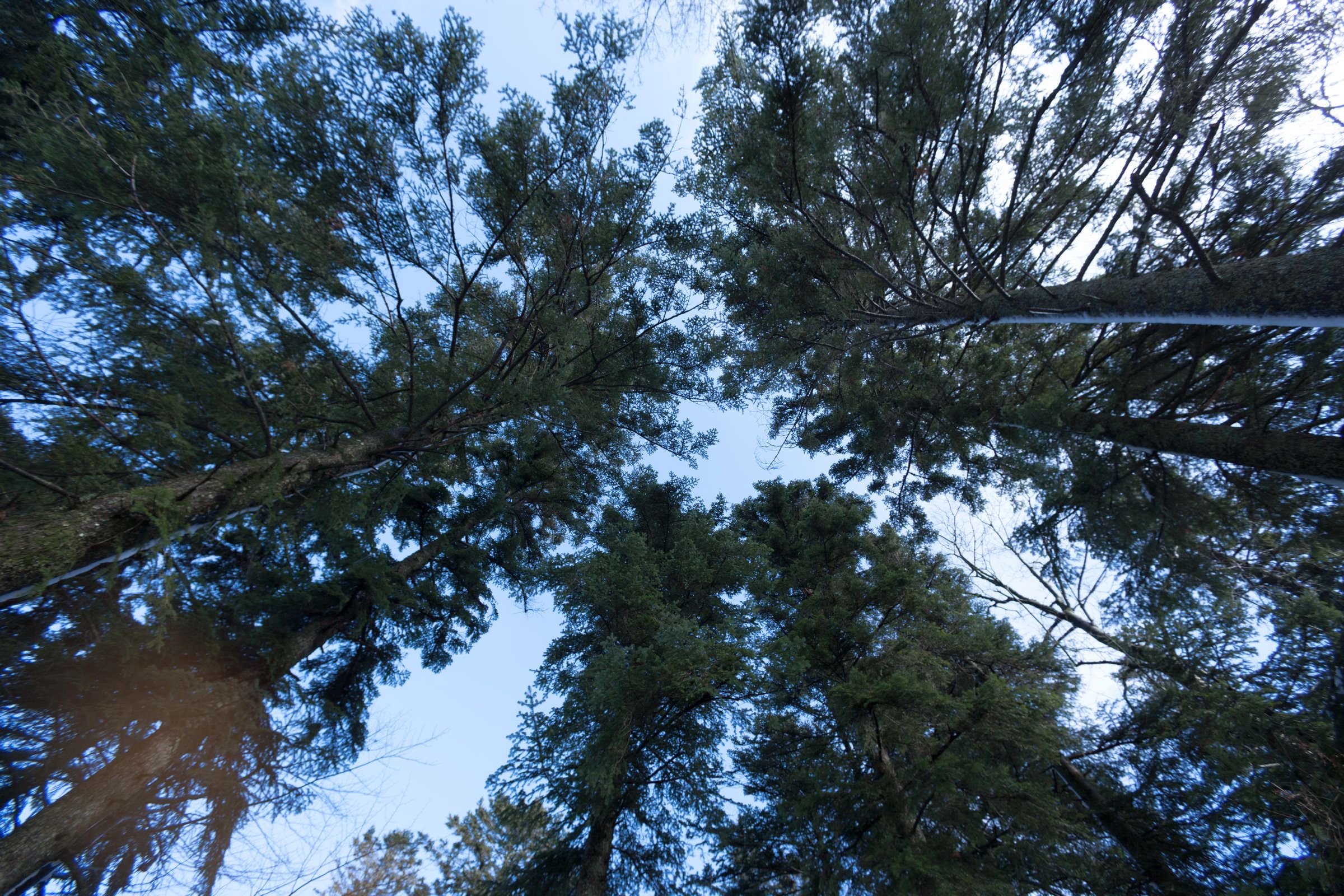
Forest of Gorski Kotar, Croatia / Copyright Romulić and Stojčić
For the latest travel info, bookmark our main travel info article, which is updated daily.
Read the Croatian Travel Update in your language - now available in 24 languages.
Meet HGSS The Croatian Mountain Rescue Service
August 19, 2020 – All weather, all terrain, all year round – meet HGSS The Croatian Mountain Rescue Service, amazing volunteers who will never let you down
They're never far from the news. For the last two weeks, members of HGSS The Croatian Mountain Rescue Service have yet again been on the TV news every night. They're leading the search for a summertime visitor, a Polish hiker missing on Biokovo mountain.
But, watch again this winter and, for sure, they'll be in the headlines once more. Whether, they're scaling mountain ranges in the unbearable heat of high summer, searching underwater caves, flooded rivers or the sea, breaking through wild forest or trudging through metres of snow, they undertake their search and rescue missions over every terrain, in every weather condition, in every month of the year, all across Croatia. And, they all volunteers.
Marc Rowlands meets the head of service for HGSS The Croatian Mountain Rescue Service and three of its volunteers to find out who they are and what makes them do what they do.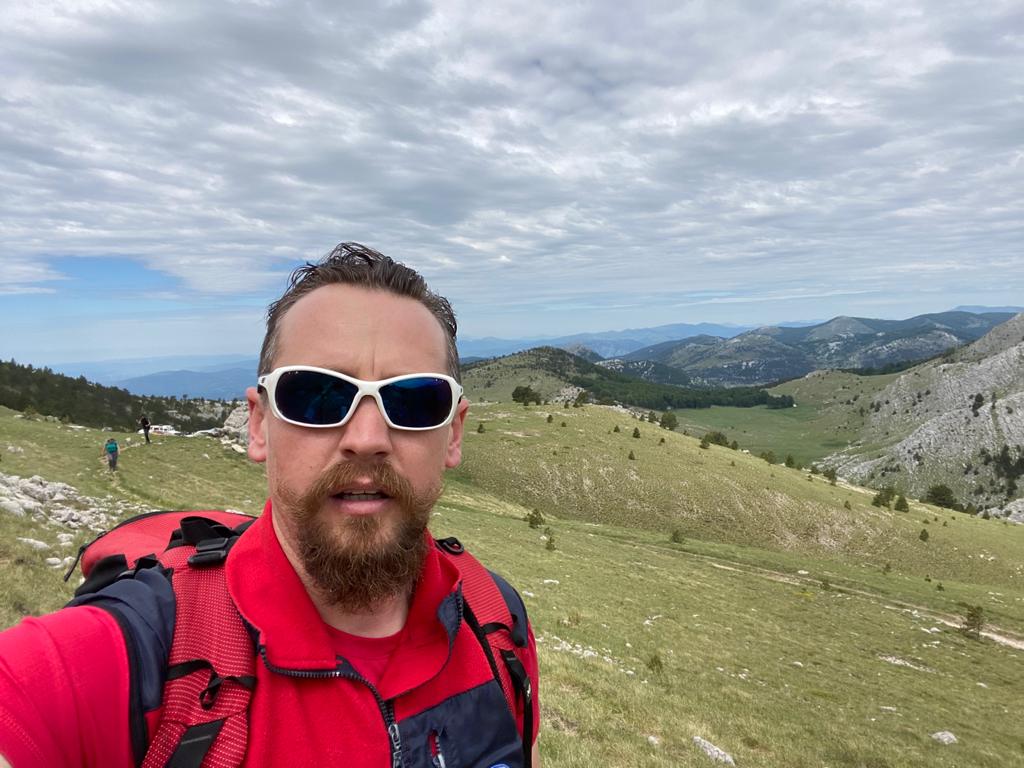
Josip Granić, head of service for HGSS The Croatian Mountain Rescue Service
My name is Josip Granić. I'm the Head Of Service for HGSS The Croatian Mountain Rescue Service. We've had an extremely busy couple of weeks. Being head of service for an organisation like this under such circumstances means you're always on the phone; co-ordinating, talking to outside organisations, members of the press. Communication. It's a 24/7 job, 365 days a year. If people need help, you can't take a holiday. Not at this level of the organisation.
We have around 1000 members. There are 11 paid positions in the main organisation and 25 people we pay to run the administration in each of the teams or stations we have. All of the members who perform the search and rescue are volunteers. We have pilots, surgeons, nurses, students, professors, every part of society.
I'm originally from Kaštela, but my home station is in Karlovac. I've been there for 15 years. I've been Head Of Service for two. Since I assumed the position, I've spent most of my time in the car. I travel all over Croatia.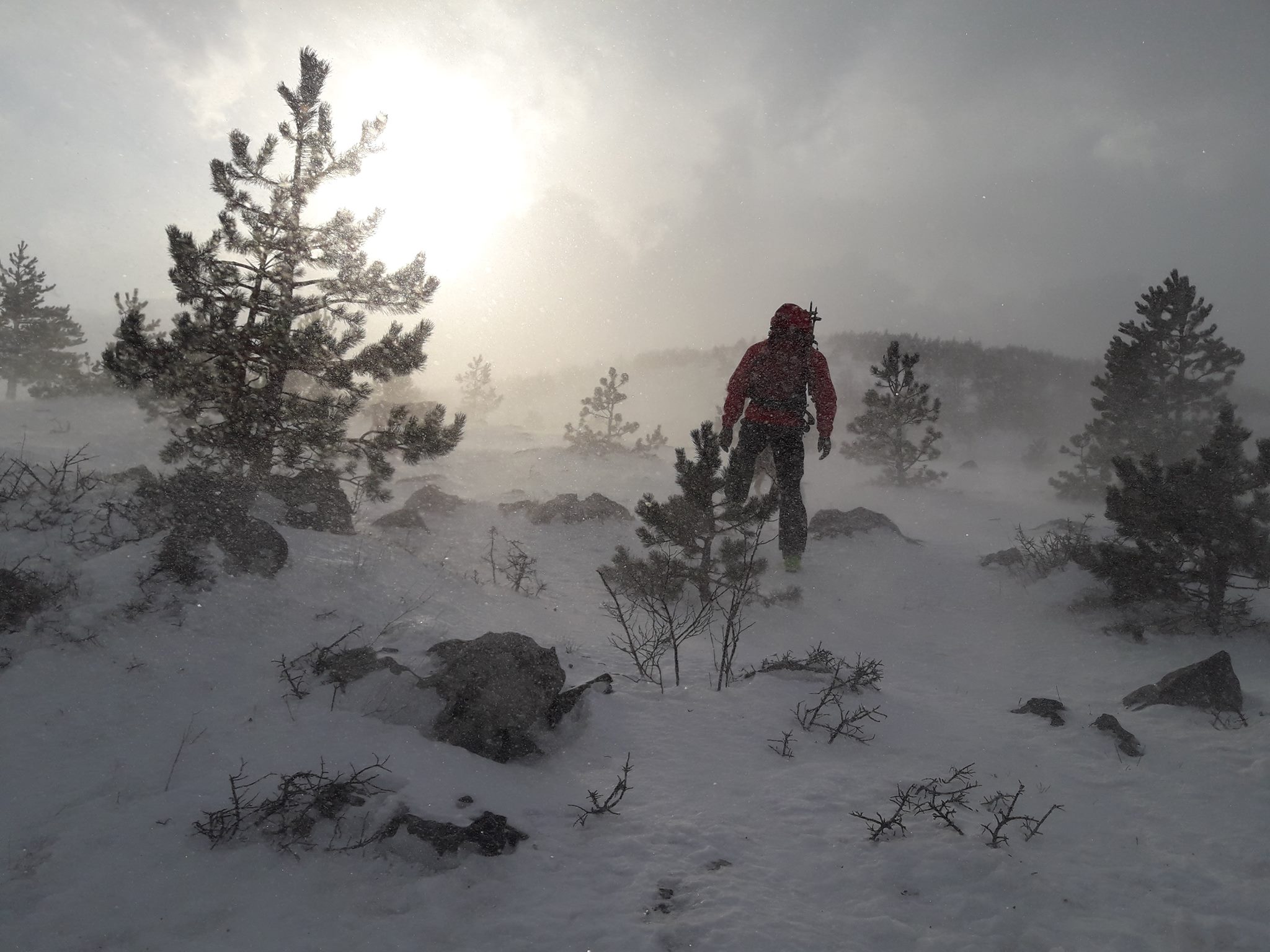
HGSS The Croatian Mountain Rescue Service missions can be hampered by extreme weather conditions © HGSS The Croatian Mountain Rescue Service
To get a certified position as a mountain rescuer in Croatia you all do the same training. It doesn't matter if you come from Slavonia, Dalmatia or Istria, you must have the knowledge and ability to deal with circumstances in any terrain; caves, pits, mountains, on snow, underwater.
Depending on where your station is, the type of call-outs you get could be very different. In Slavonia, 90% are for missing persons - searching forests, rivers, and in floods. We've had a big search on Biokovo mountain for the past 16 days. The stations from Split, Makarska, and Dubrovnik were at first involved, then teams from all over Croatia. It's not the same as Slavonia. The terrain is very different, so you have to be good at a particular set of skills. But, the largest percentage of call-outs is still missing persons. It's 70% of our work nationwide. The other 30% are rescues.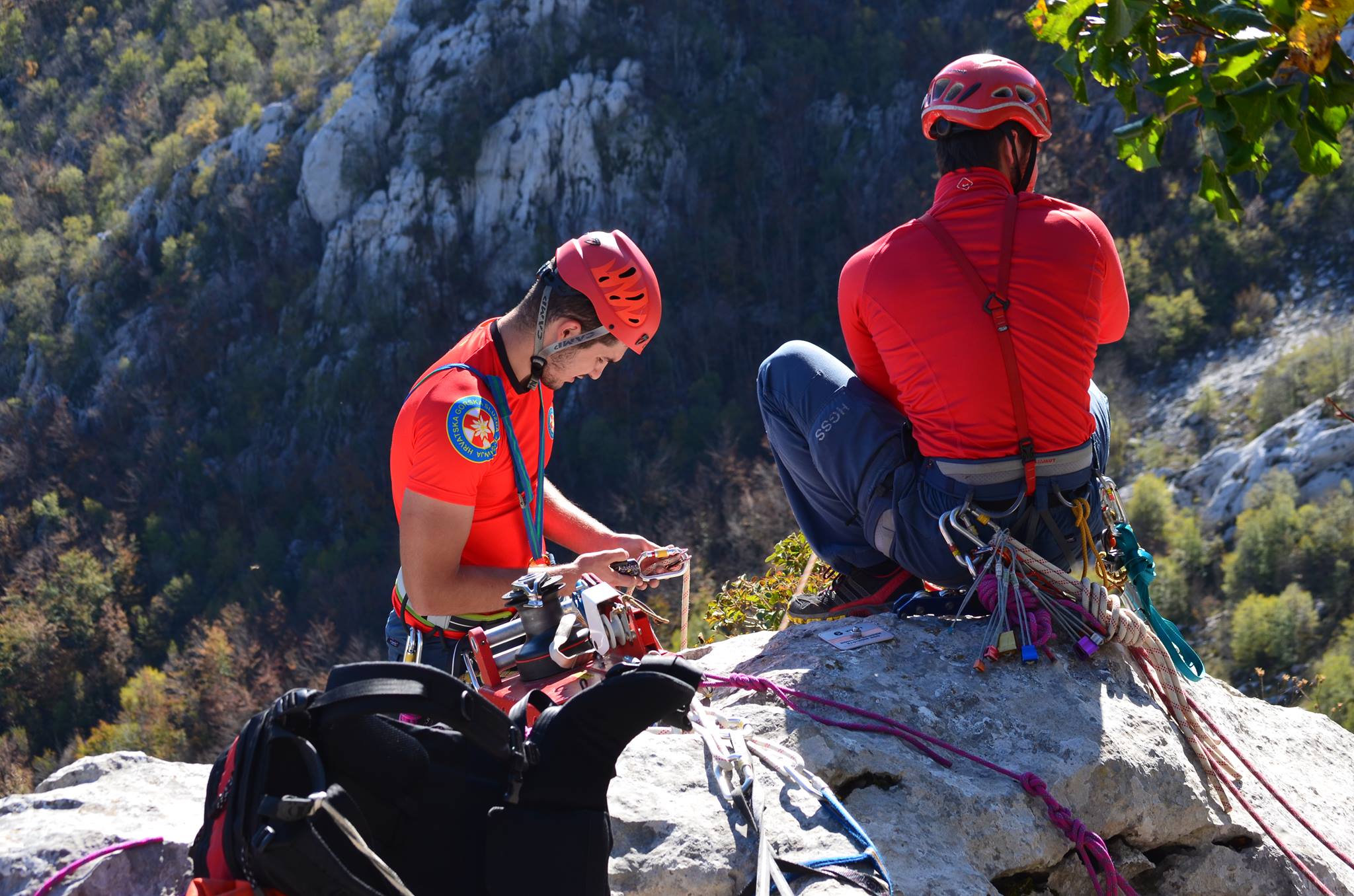
HGSS volunteers are educated to use a wide range of technical equipment. They are trained to operate in all the different kinds of terrain found across Croatia © HGSS The Croatian Mountain Rescue Service
There are usually 800 – 1000 missions a year across the country. We get roughly the same amount of calls in colder months as in warmer months. Only, winter months can be busier. The terrain is more difficult. There are some villages in Croatia – usually where the front line of the fighting was, around Karlovac, Kordun, Lika – and when it snows, it can be almost impossible to reach those places. But, some older people still live there. It can take days to reach them on snowmobiles, then skis, to deliver food or medecine. The other busiest places in winter are the ski resorts - Platak, behind Rijeka, and in Zagreb, on Sljeme. There are teams stationed in those places throughout the snow season.
What's the greatest danger of the job? Almost everything. Nothing in this job is easy. The greatest dangers we face are the same facing those that we rescue - underestimating the environment, nature, the conditions. That's where our training comes in.
In mountain rescue, we separate dangers into subjective, objective and technical. Subjective is the stuff you're guilty of - lack of preparedness, knowledge or equipment. Objective dangers are the ones you can't control, like sudden changes in weather, or avalanche. If you're sensible and informed, there should be no objective danger.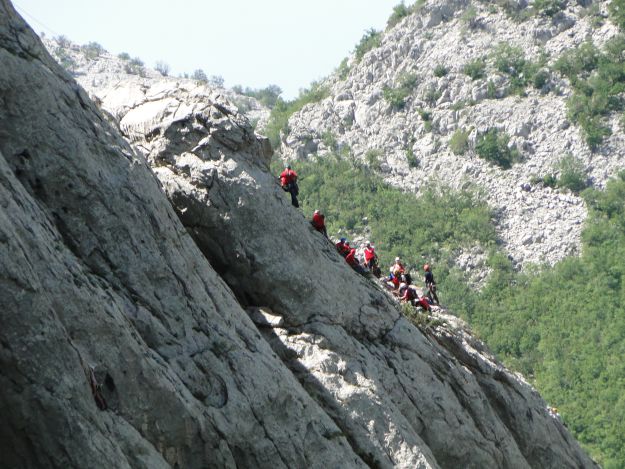
HGSS on a mission, clinging to a steep incline in Paklenica © HGSS The Croatian Mountain Rescue Service "People need to be aware at all times on the mountains. By the time most people think they may be in trouble, they've usually been in trouble for five or ten minutes already" Josip Granić.
80 – 85% of the people we rescue are Croatian. Only 15 – 20% are guests. People from Czech Republic, Slovakia, Poland, (Austria and Slovenia too) tend to enjoy nature more. They like hiking. That's the reason there are typically more rescues for those nationalities than there are for British, Belgian, French, Italian, America, Canadian or Australian guests. I don't remember the specific year, but sometime between 15 and 20 years ago we had a season where 5 or 6 Czech nationals were being searched for or, sadly, turned up dead. The media covered it and ever since there's been this myth that all the people who get into difficulty are Czech.
The question about expensive helicopter rides - why don't you charge the people you rescue - has been here forever. It's like this - if you're a tourist and you have a car accident in Croatia, the fire service, police and an ambulance will come. You won't get charged. We are a tourist country. According to international agreements, we are obliged to make everything safe for residents and guests alike. We are here, just like the fire service and police, to do our part. The Croatian air force is responsible for the helicopter rides and I have to give credit to them - they are crazy good pilots. Amazing. Even if we did charge everyone we saved - and most of the 85% of Croatians we save would struggle to pay - it still wouldn't be anywhere near the money required to run this service.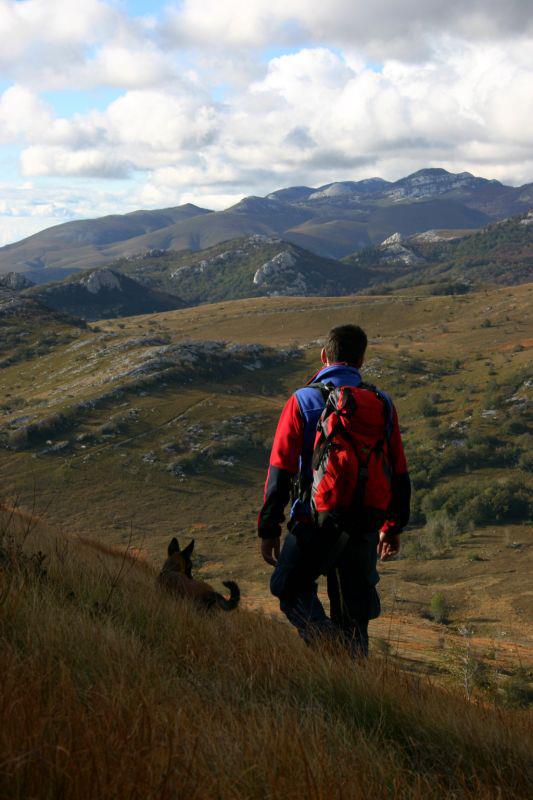
The Croatian Mountain Rescue Service used specially trained dogs on their searches © HGSS The Croatian Mountain Rescue Service
In 2007, I got a new search dog. It came from the Ogwen Valley Mountain Rescue service in North Wales. We cooperate a lot. We were sent out on a job to look for a three-year-old male child who had gone missing near Požega at the beginning of January, wintertime. His grandma was watching him and they were in a house on the edge of the woods. Early in the morning, he was playing with a dog. It suddenly ran into the forest and the boy chased after him. The grandmother didn't see it happen. I found him using my new dog, just after 8 o'clock the next morning. He'd been alone in the freezing forest for almost 20 hours.
Time is really moving fast on a job like that, because it's a kid and because it's so cold. Survival rates in such conditions are not good after 24 hours. When I found him, saw that he was alive, those big eyes looking up at me, it's a crazy feeling. You can't describe it. You can't compare it. A lot of positive emotions.
Every mission is special. We meet them all with the same level of determination and professionalism. But, it's the ones where you know you've really saved someone that stand out in the memory. Not the broken leg, where you transported someone – sure, that's an excellent job. But, when you know you've saved someone's life, that they definitely wouldn't be here now if it weren't for you, that's what makes it all worthwhile.
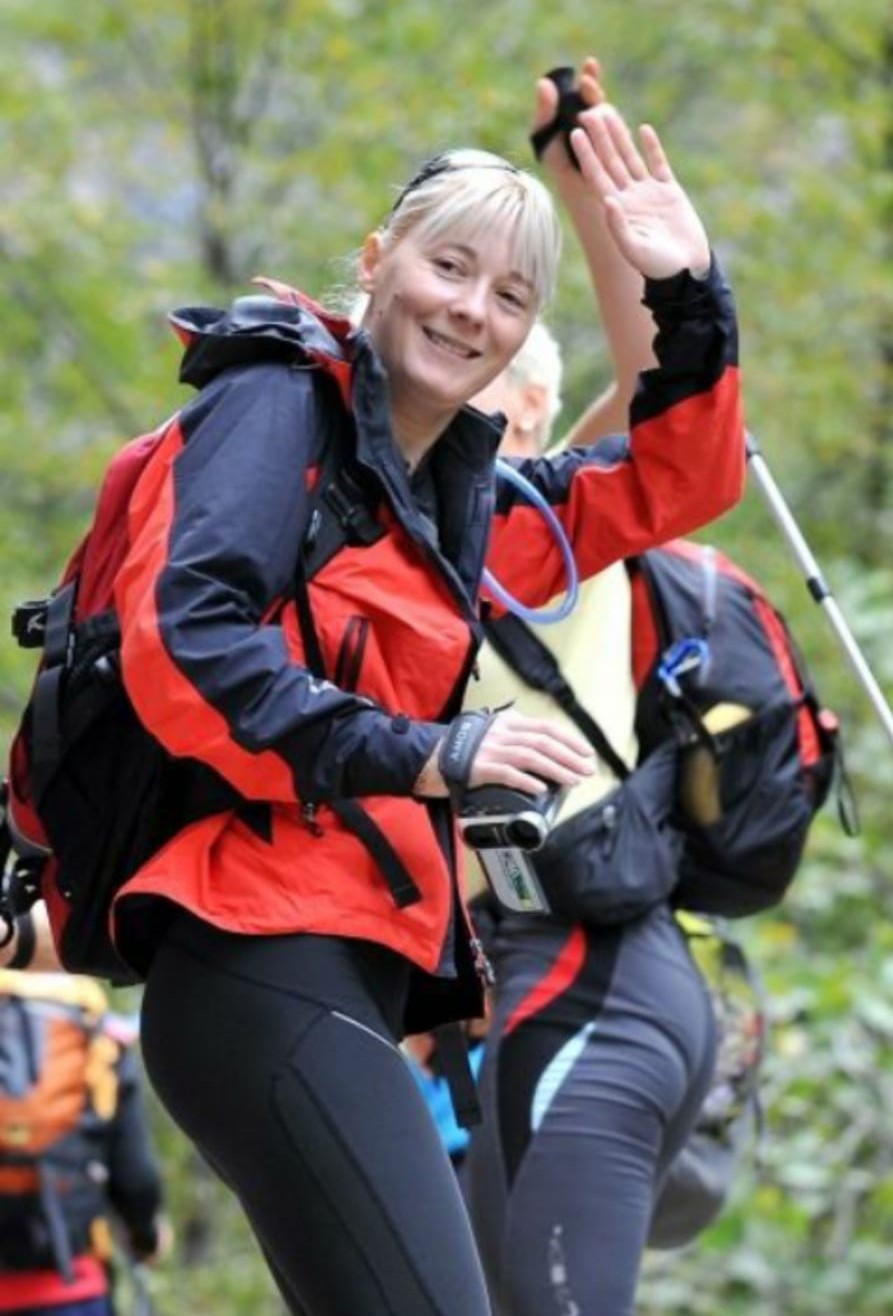
Jana Mijailović, volunteer for HGSS The Croatian Mountain Rescue Service
My name is Jana Mijailović, I'm 48 years old and I'm from Zadar. I finished school to be a teacher, but I never did it. My husband and I run a company that does plastic and aluminium windows for houses.
I started to go into the mountains when I was at high school. I never had the ambition to be part of mountain rescue services – people just noticed me on the mountains. They said I'd be good at it and asked me to join. I met my husband on the mountains. We are both volunteers for HGSS The Croatian Mountain Rescue Service. I've been doing it for 16 years.
I was a member of the first and second all-female Croatian expeditions to the Himalayas. We first climbed Cho Oyu in 2007, then Mount Everest in 2009. Croatia is the only country in the world that has only one successful male climber of Mount Everest, but four successful female climbers. I sometimes work as a guide too. I guess you could say I'm all about the mountains.
Being a climber, an Alpinist, I know that if I get into trouble, it's only my HGSS colleagues who can help. I feel this instinctively. I cannot be in the house, safe and warm, knowing that maybe someone needs help that only I can provide.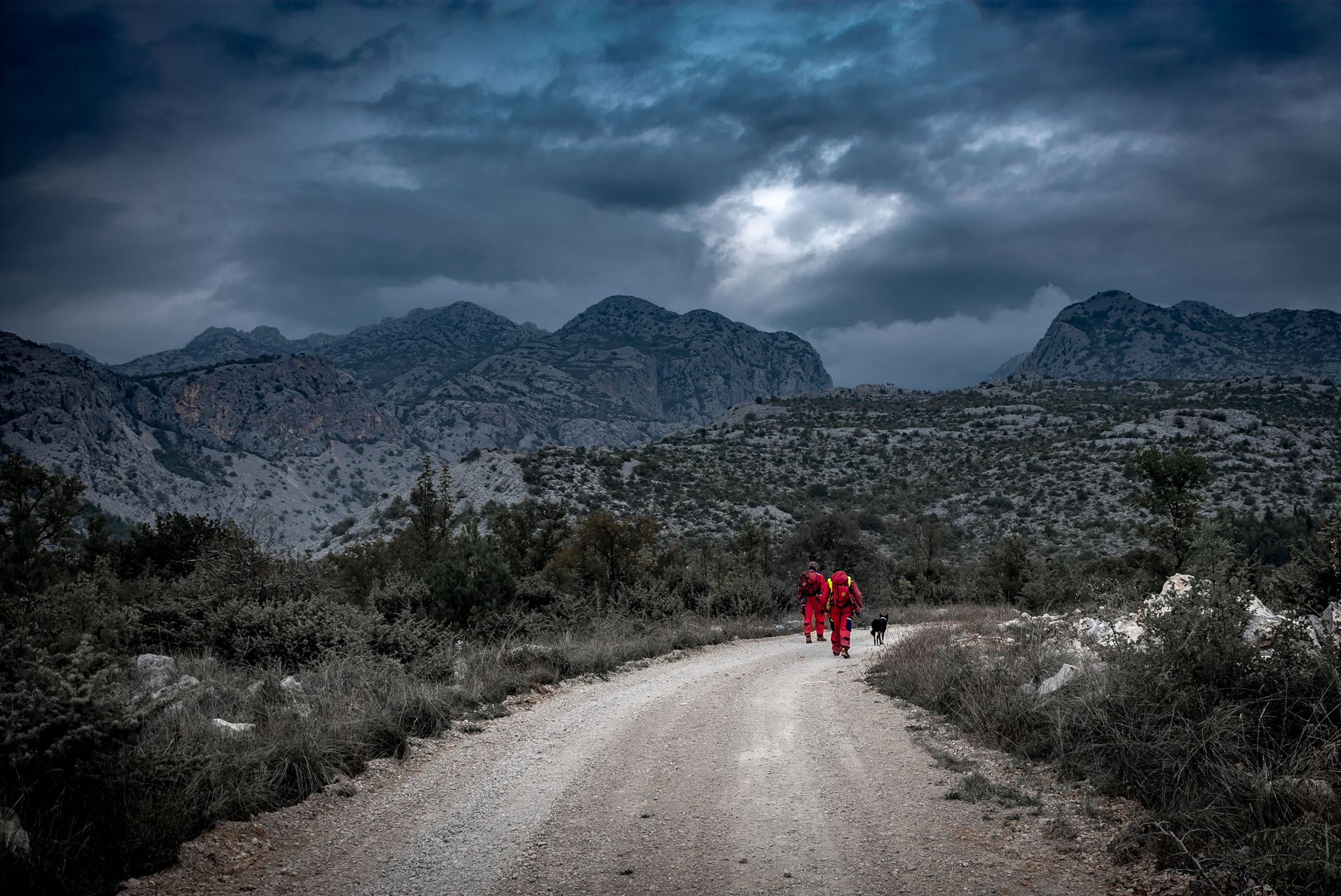
HGSS The Croatian Mountain Rescue Service members entering Paklenica under foreboding skies © HGSS The Croatian Mountain Rescue Service
I've really been on so many expeditions with HGSS. My station are on duty in the season at National Park Paklenica and I'm now the coordinator. Climbers from all around the world come and so there are many interventions. None of them are easy because the terrain is incredibly difficult. You really have to be in shape and know the techniques inside out.
I'm very proud of my statistics. Everyone I've rescued, who was alive when I reached them, is still living today. Unfortunately, not everyone we reach is alive when we arrive.
I remember one time, my husband and I were having dinner. We were arguing about the techniques and knots for moving a stretcher down a vertical climb. The training is so intense, you really have to know it well, and I guess that's just the kind of people that we are, that we would be arguing about it in our free time. Ha! He told me, "Why do you care? You'll never have to do that," because usually, it's really strong guys who do that specific job. If you're on a 400-metre-high section of rock, it really takes a lot of muscle.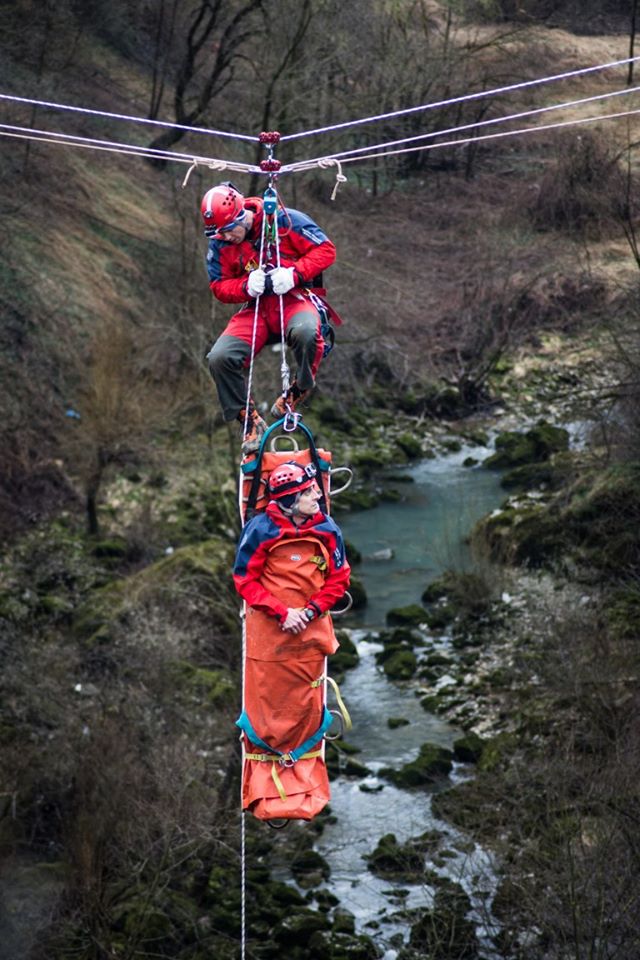
Ascending from a valley floor or descending from a mountain peak with a stretcher is a technically difficult operation, often hindered by darkness and adverse weather conditions. It requires a lot of training and a lot of muscle © HGSS The Croatian Mountain Rescue Service
In the evening, just two days later, we were called out to rescue an Italian guy who broke his leg on Anića Kuk. It's a really mighty part of the stone. And the leader of the expedition asked me to go on the stretcher. They pull you down on the ropes and you have to push very hard to keep the stretcher, the person you're carrying and yourself away from the rock, while balancing the weight of all three. It was dark, raining and with lots of Bura, the incredibly strong wind that sometimes hits us. That's probably my most memorable rescue.
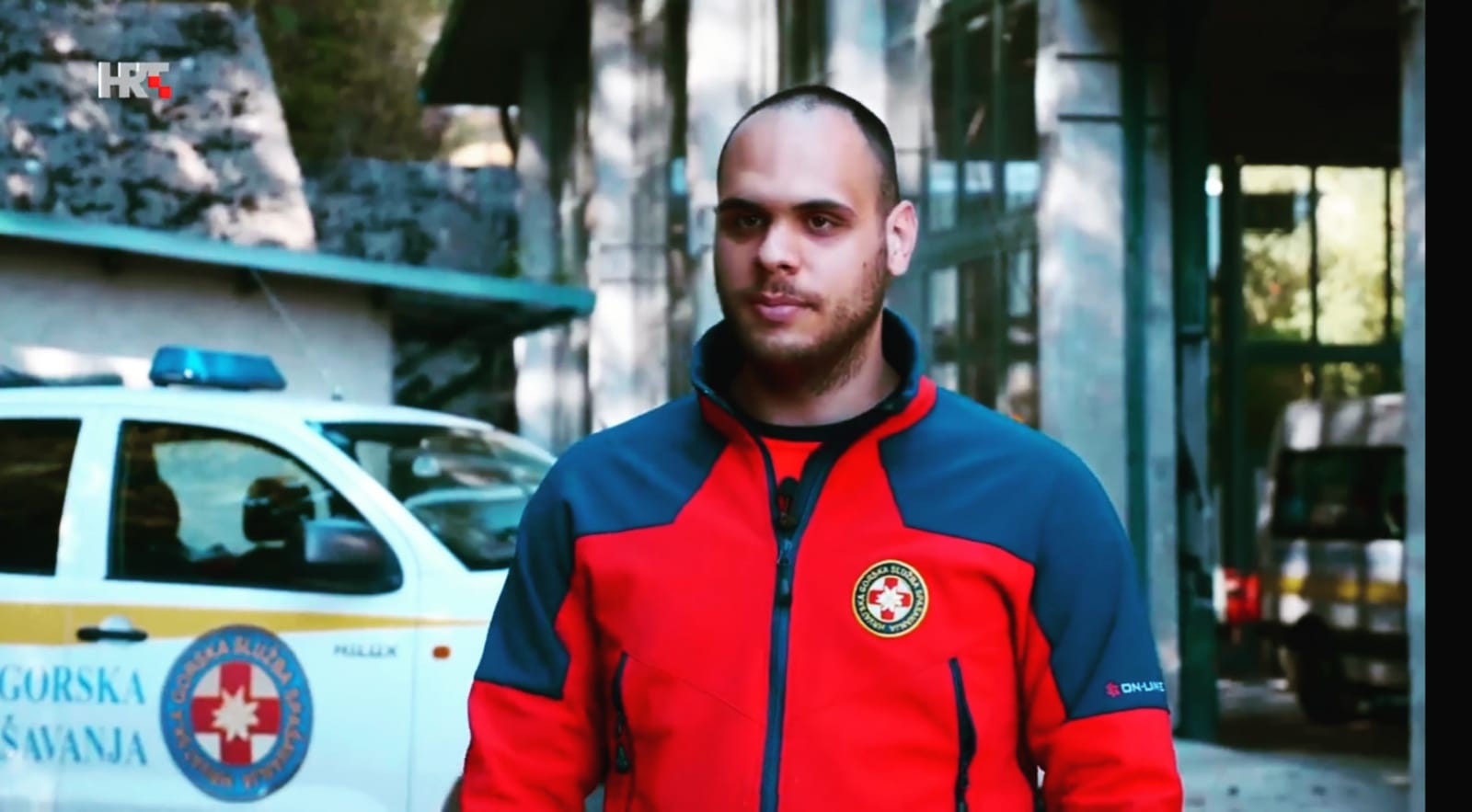
Petar Prpić, firefighter and volunteer for HGSS The Croatian Mountain Rescue Service
My name is Petar Prpić, I'm 25 years old and I'm from Hrvatska Kostajnica, just on the Croatian-Bosnian border. My station is in Novska. In my full-time job I'm a professional firefighter. I guess I have two dangerous jobs. Well, one job and one hobby.
I've always been interested in the outdoors – mountaineering, hiking, canoeing. But, that's not why I joined HGSS The Croatian Mountain Rescue Service. I just wanted to help people. I don't know, I guess it's just something in me.
We have a lot of rivers in our area. During the times of flood, we get a lot of call-outs. Our part of the country has a high percentage of elderly people in the population. A lot of them live in small villages, on the edge of the forest. We get a lot of call-outs for searches. Especially in the autumn when people go out looking for chestnuts or mushrooms. But, like all the stations in Croatia, we are here year-round if there are any actions in other parts of the country that need us.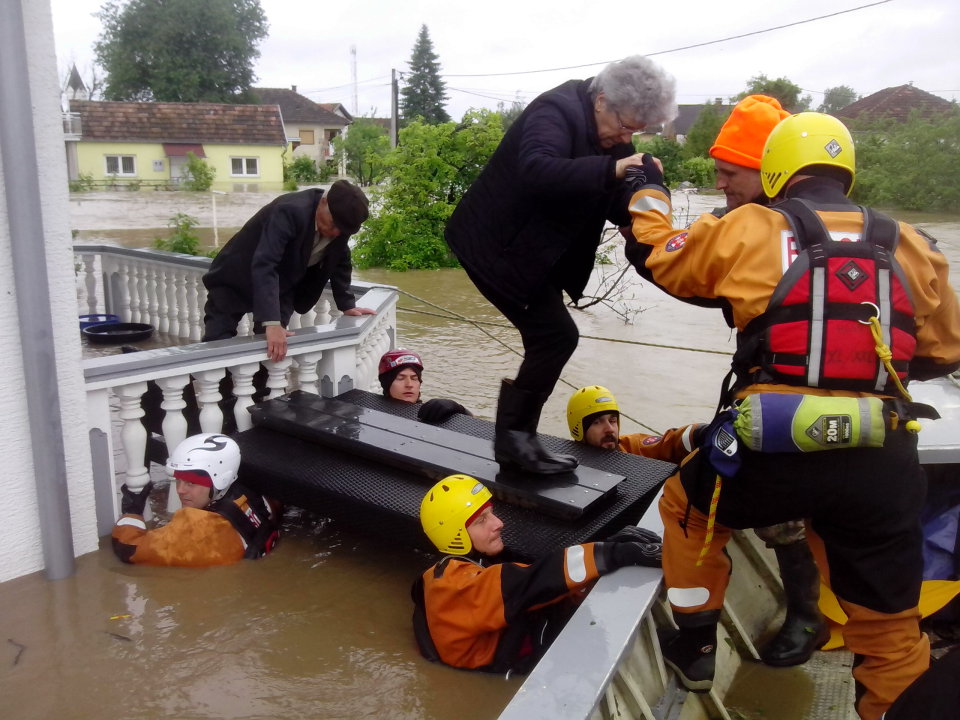
In some areas, HGSS The Croatian Mountain Rescue Service are frequently called out in response to flooding. This picture shows HGSS members on operation during the 2014 floods. In that year, flooding across the whole region was so bad that HGSS members operated not only in Croatia, but also donated their services to neighbouring Bosnia and Serbia © HGSS The Croatian Mountain Rescue Service
I was just on the search in Biokovo. The head of service called me and asked me to go. I first had to get some free days from my job. I called my boss, Zvonimir Ljubičić, chief of the fire department. He's great, very understanding, and he gave me permission. Two years ago I was called to Rab. Very hard operation, very difficult terrain.
Late last summer, we were called out to look for an older man near Glina. It was around 11 o'clock in the evening. He'd gone to look for mushrooms in the afternoon and never came back. Police were there and they sent for us.
The man had a cell phone on him, but there was no signal. There was no location given off the phone. We were a team of four, split into two teams. We went up into the woods above Glina and concentrated our search on areas where we could see there was no telephone signal on our phones. We were yelling in the dark. After an hour of search, someone answered. He'd been missing since 2pm. We found him at 2am. He was just lying there, uninjured but unwell, unable to move.
The reason it sticks in my mind is that the next day, in the morning, his daughter called me. She was so thankful, so emotional. For sure we saved his life. None of the other emergency services who were present could find him. It was down to us. We finished the operation at about 6am and then all four of us had to go immediately to our regular jobs.
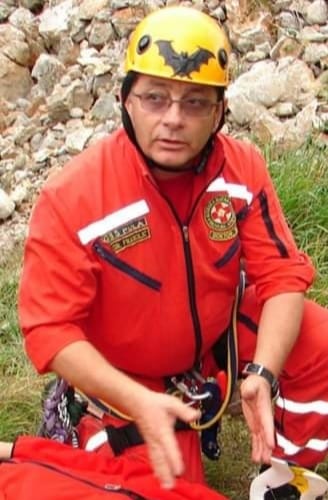
Mario Franolić, physician, ex-commando and volunteer for HGSS The Croatian Mountain Rescue Service
My name is Mario Franolić and I'm 60 years old. I'm the chief of the mountain rescue service in Istria. I travel throughout Croatia because I'm also an instructor for the medical commission of HGSS. I was born on island Krk. I'm based in Pula although I work in Rijeka. I travel a lot between the two. I've been with HGSS The Croatian Mountain Rescue Service for 18 years.
In my day job, I'm a physician. I am a senior mentor at the Institute for Underwater and Hyperbaric Medecine in the Clinical Hospital Rijeka. I'm an expert in my field of emergency medecine. I've been doing it for almost 30 years.
When I was young, I trained to be a physician in Belgrade. It was then the best medical faculty in Yugoslavia. At the same time, I also started spelunking (cave exploration). I've been doing it since 1978. Later, I was a physician in the military underwater commando unit. I lived in Austria for five years, but when I came to Pula, they were just starting the HGSS The Croatian Mountain Rescue Service station here. They asked me for help because they didn't have any medical professional on the team. I accepted. It would be a waste not to use all these skills I have.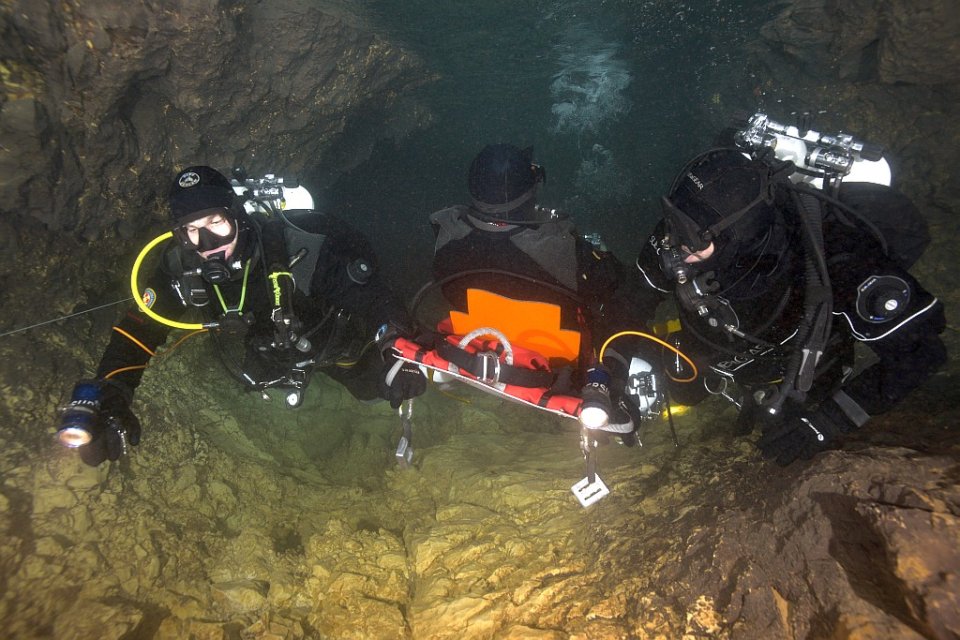
Specialist teams from HGSS are trained in underwater rescue from caves. Such caves exist all over Croatia in the karst rock, and also on some islands © HGSS The Croatian Mountain Rescue Service
Sometimes, our status as volunteers can give us problems. Although we have official duties, we are more like an NGO than something like the police. There can be legal implications. I remember one situation, very acute because a paraglider fell from the sky. None of his colleagues saw him fall. Paragliders go into the air together, but then they each branch off to do their own thing.
We had no idea about the location. We started from the last point of sighting, knowing that it could be very far from the place where he actually fell. But, we had to start somewhere. We had one mobile phone signal direction. But, you need three in order to locate someone. We only had a line on the map.
In the past, HGSS The Croatian Mountain Rescue Service sometimes had difficulties because the telephone companies wouldn't give us the information we needed in order to triangulate the position of a missing person. They would only give it to the police. But, it's a race against time. We searched for this man all day and all night. In the morning, some Croatian paragliders made private contact with a guy from the phone company. They begged him to release the information we needed. Although he could lose his job, giving such information to private citizens, he did it.
We found the man about 150 metres from where we were. Sadly, he was already dead. It was very small comfort to see that he had died instantly, on impact. It's unbearable when you reach someone you could have saved if only you had got there quicker, especially in an instance such as this, where we were hindered by a lack of information that was available. I think it moves more quickly now, but still we have to go through the police.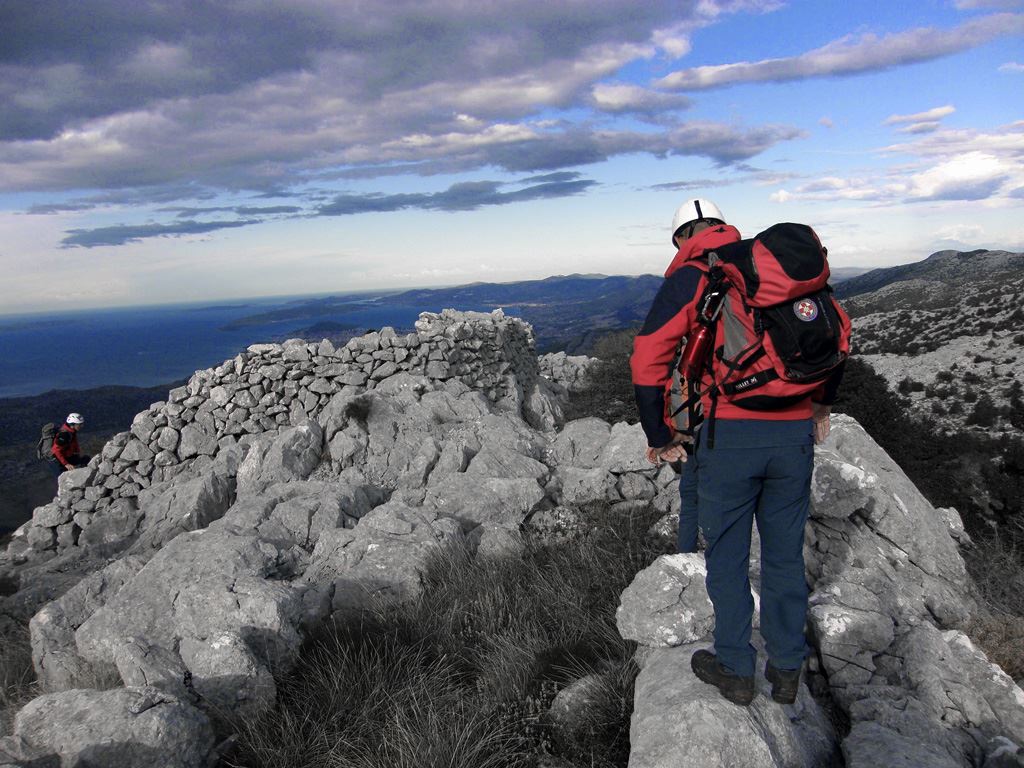
© HGSS The Croatian Mountain Rescue Service
One of the most emotional operations I went on was around five years ago, the rescue of a young girl - maybe two and a half to three years old – who got lost in the woods in a small place in central Istria. She chased into the forest after some dogs around 10 or 11 in the morning. The family saw immediately that she had disappeared and started to search. About two hours later, we were called out. It was impossible for the family to find her.
About 300 people came – my station, the Rijeka station, hunters, firemen, police and volunteers. In such an operation, the police are the lead service. But, 99% of the time they leave the organisation of the search to HGSS The Croatian Mountain Rescue Service. We are the only organisation who is very well educated in organising searches. When other people do searches, they use intuition. But, people all have different intuition. It can be chaotic. We are highly trained for this. There are procedures, recognised internationally, that we follow. We found her early in the morning, at around 7 o'clock. The dogs were lying on each side of her, giving her warmth.
All photos courtesy volunteers and HGSS The Croatian Mountain Rescue Service


